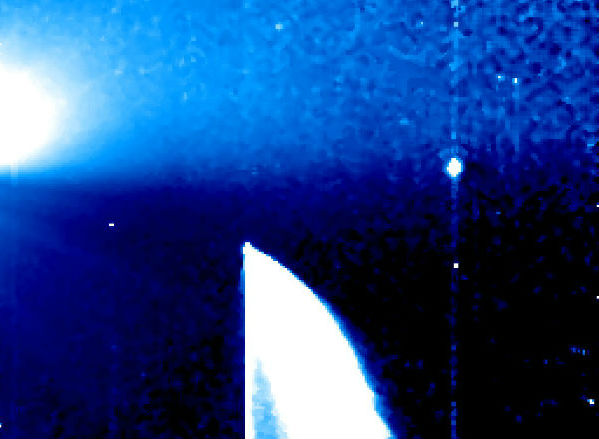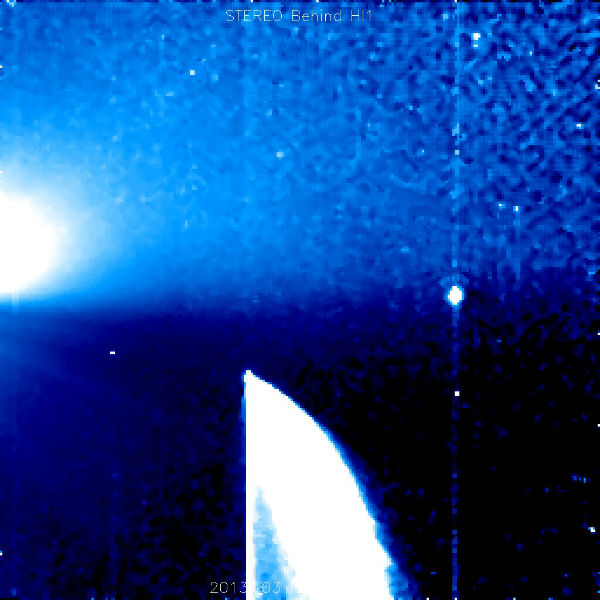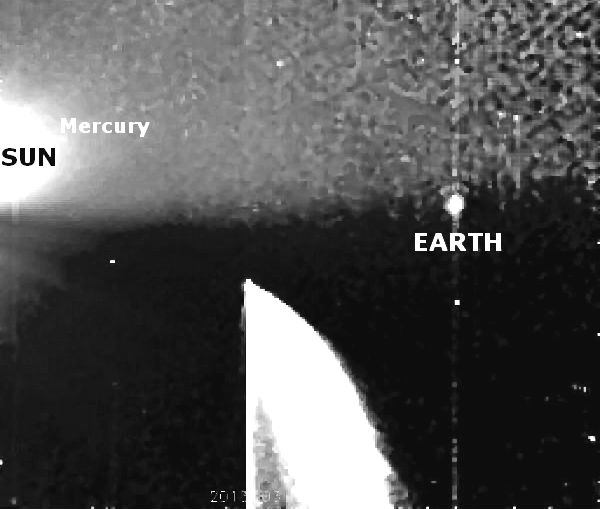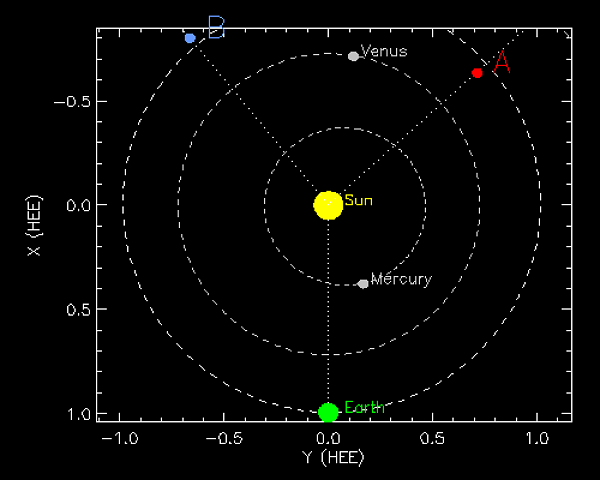Comet Pan-STARRS now visible on STEREO Behind imagery

Comet Pan-STARRS (C/2011 L4) passed inside the orbit of Mercury on March 10, 2013 reaching perihelion (its closet approach to the Sun). Now, it is visible object in the field of view of NASA's STEREO-B Heliospheric Imager.
An animation of Comet PanSTARRS in highly processed STEREO HI-1B images from March 10, 2013 (Credit: SOHO/Sungrazing Comets/SSC)
Here, you can watch an animation showing Comet Pan-STARRS entering STEREO-B camera on March 10, 2013.
Comet Pan-STARRS captured by STEREO Behind H1 on March 12, 2013 at 13:18 UTC (Credit: STEREO Science Center)
Watch STEREO B video
Sun, Mercury and Earth are also visible on STEREO-B Heliographic Imager. Here is black&white processed image (Credit: STEREO/SSC)
Currently Comet Pan-STARRS is bright object with magnitude of around +1. Comet dust reflects sunlight, so the tail of Pan-STARRS is especially bright. The comet will continue track northward and should become a circumpolar object (for observers based around latitude 50°N) on April 2, 2013. Comet PanSTARRS should dip back below +6th magnitude around April 15, 2013.
Find out more about Comet PanSTARRS here.
Astronomers are eagerly awaiting the arrival of Comet ISON, which will pass within just 2.7 solar radii from Sun center on November 28, 2013. Although comets are unpredictable, Comet ISON has the potential to be a major comet. If so, STEREO should have a spectacular view. To assist with planning for this event, a new web page has been put together describing Comet ISON's orbit, and how the comet will be seen by STEREO's telescopes, and those on other solar observatories.
The Solar TErrestrial RElations Observatory (STEREO) is composed of two sun-orbiting telescopes on opposite sides of the Sun, positioned to monitor the Sun from different vantage points along the Earth’s orbit. The mission’s primary function is to take observations of the sun’s atmosphere from two vantage points, providing a detailed perspective on space weather phenomena, such as coronal mass ejections and the solar wind.
Positions of STEREO A and B for 12-Mar-2013 16:00 UT
Visit STEREO on the NASA Portal
Sources: STEREO Science Center, SpaceWeather.com, SOHO Sungrazing Comets
Featured image credit: STEREO-B H1





Commenting rules and guidelines
We value the thoughts and opinions of our readers and welcome healthy discussions on our website. In order to maintain a respectful and positive community, we ask that all commenters follow these rules.